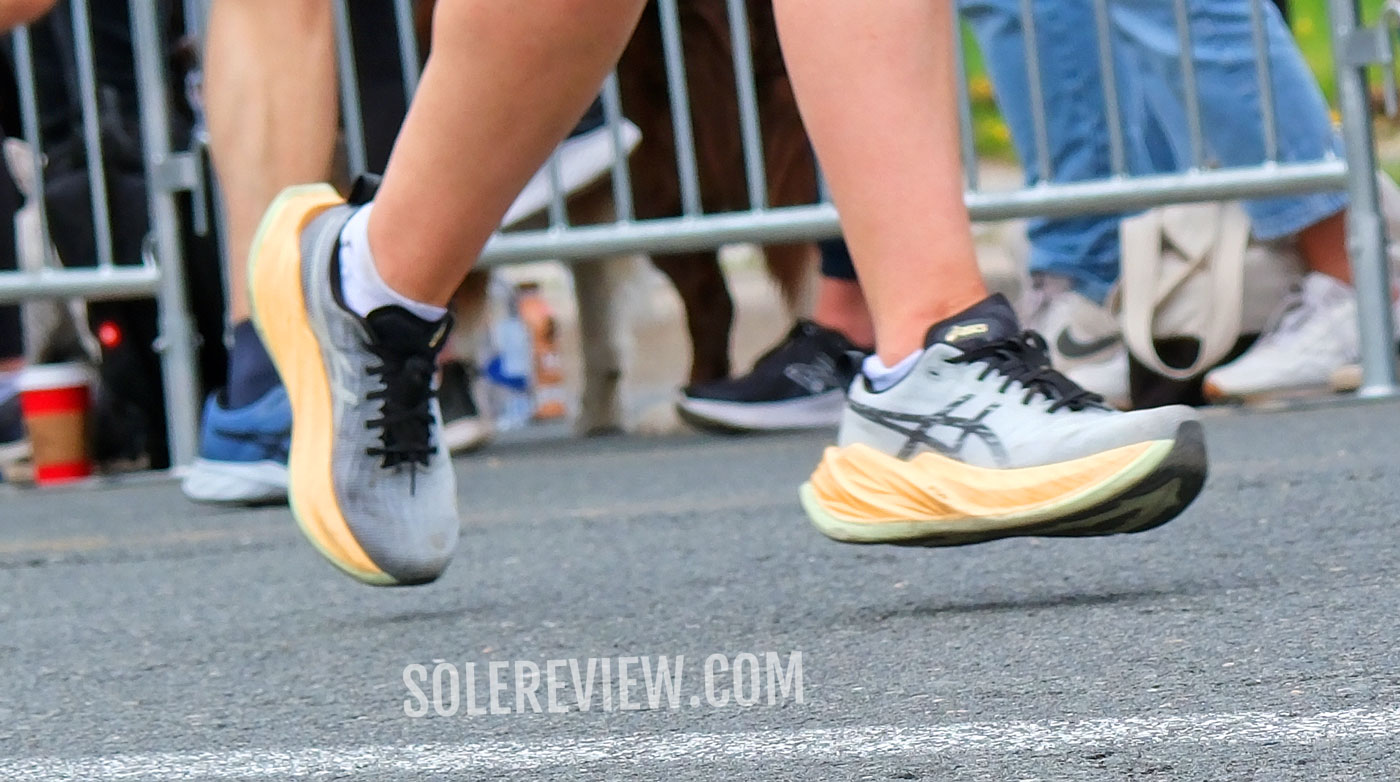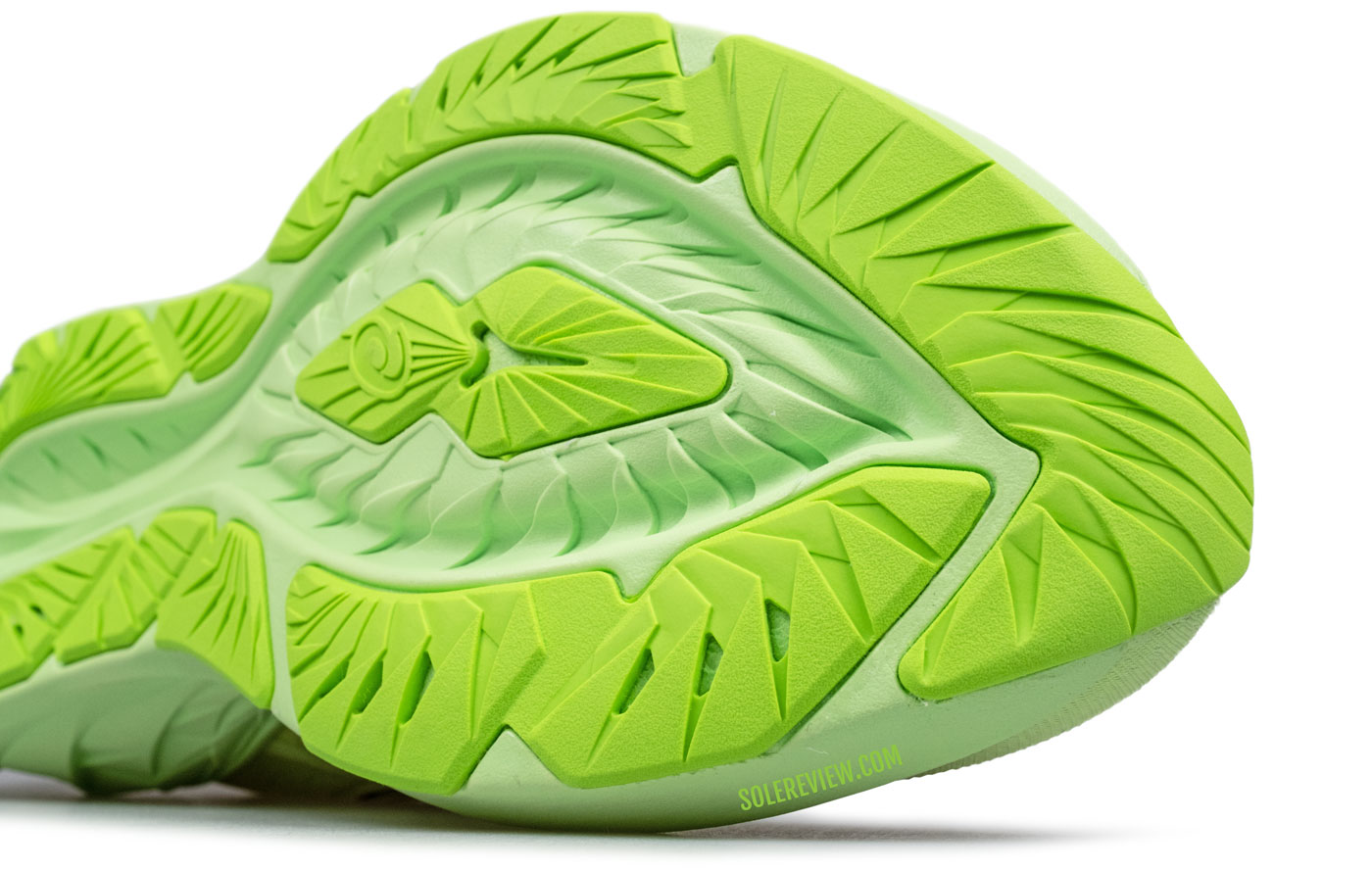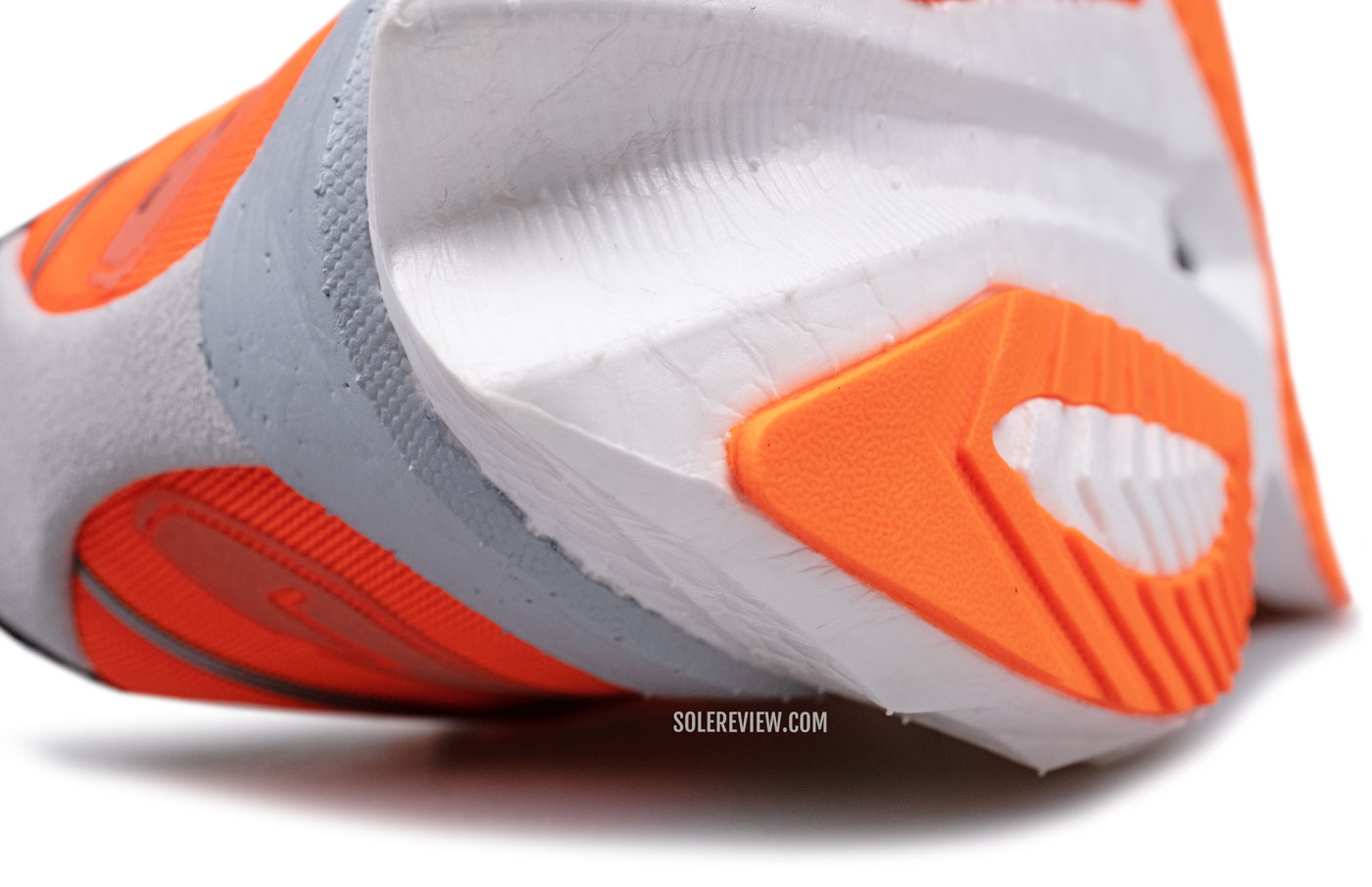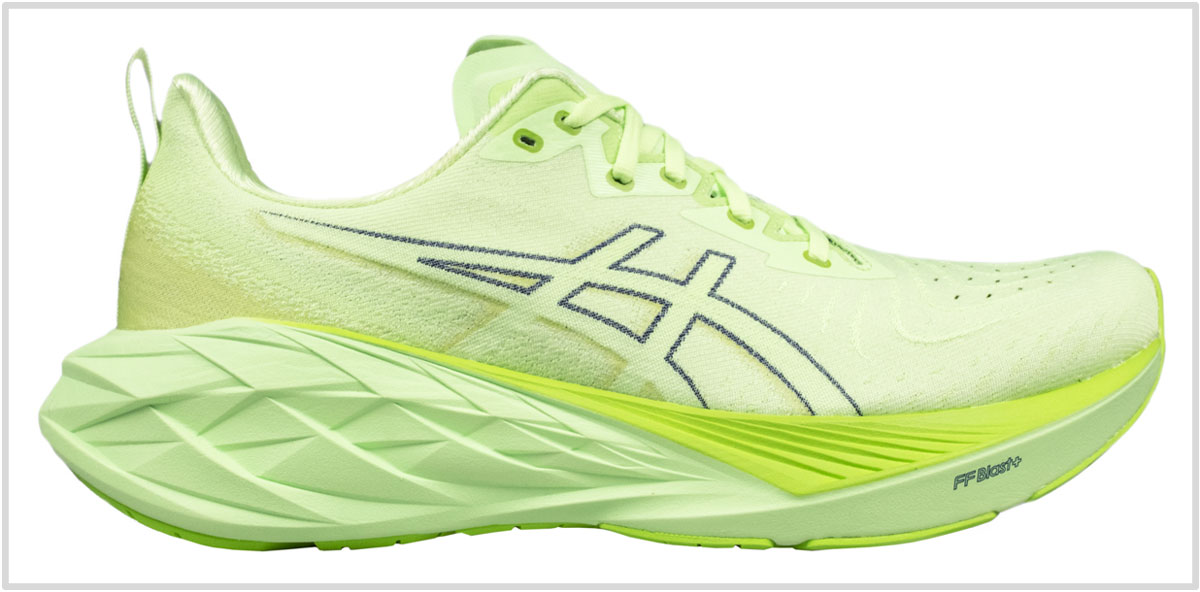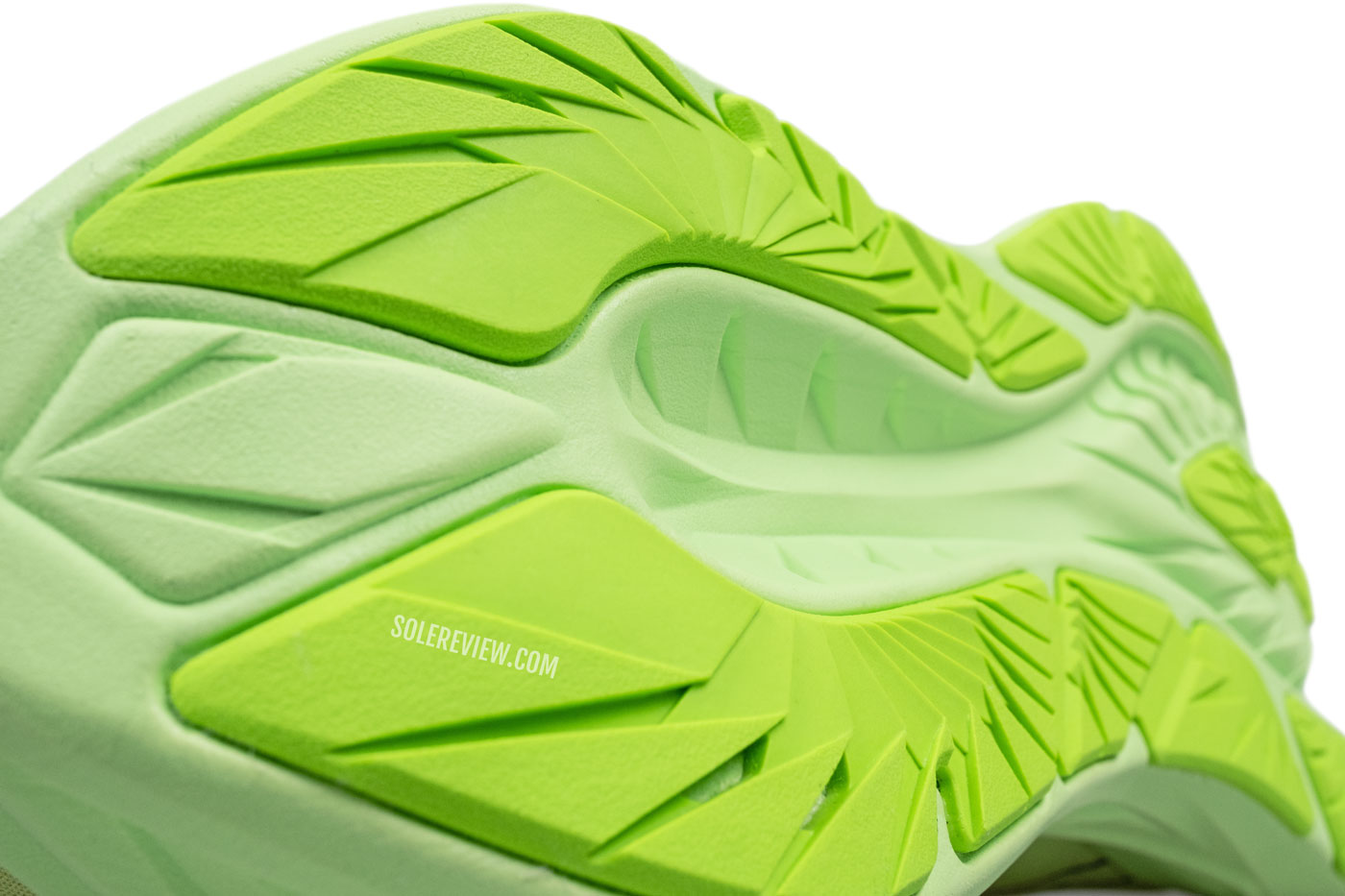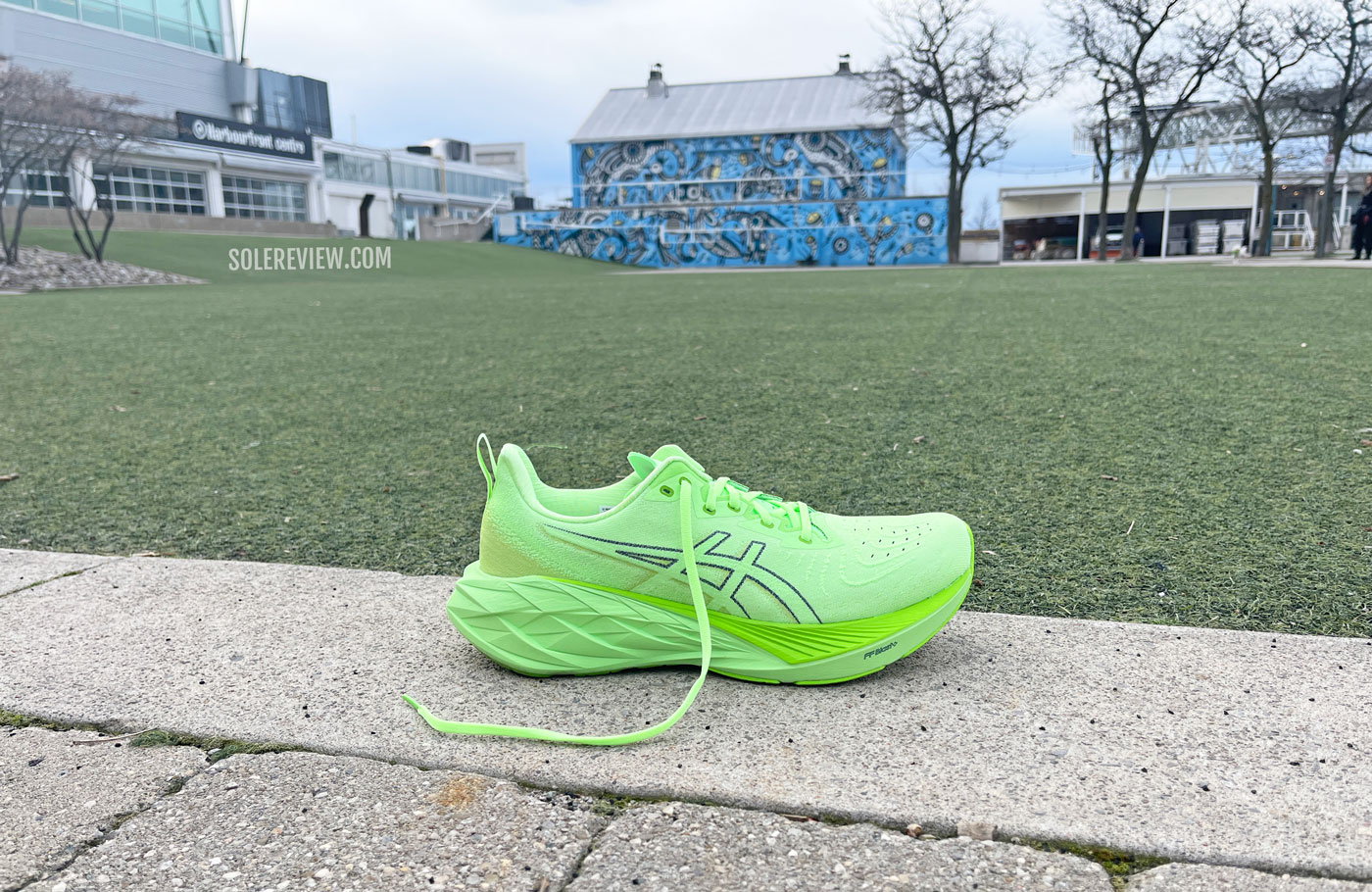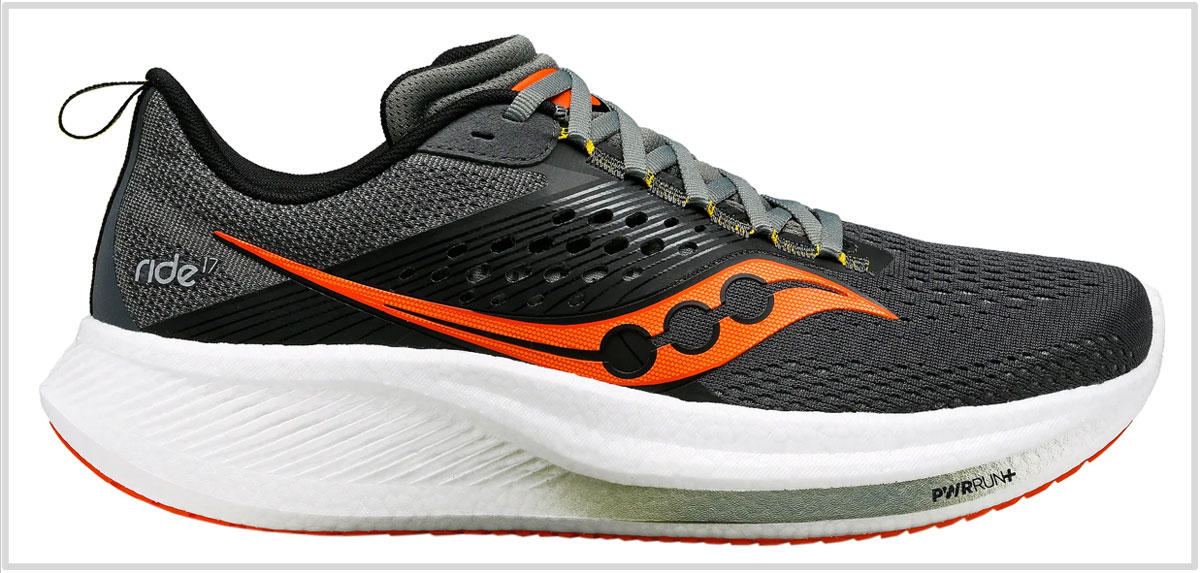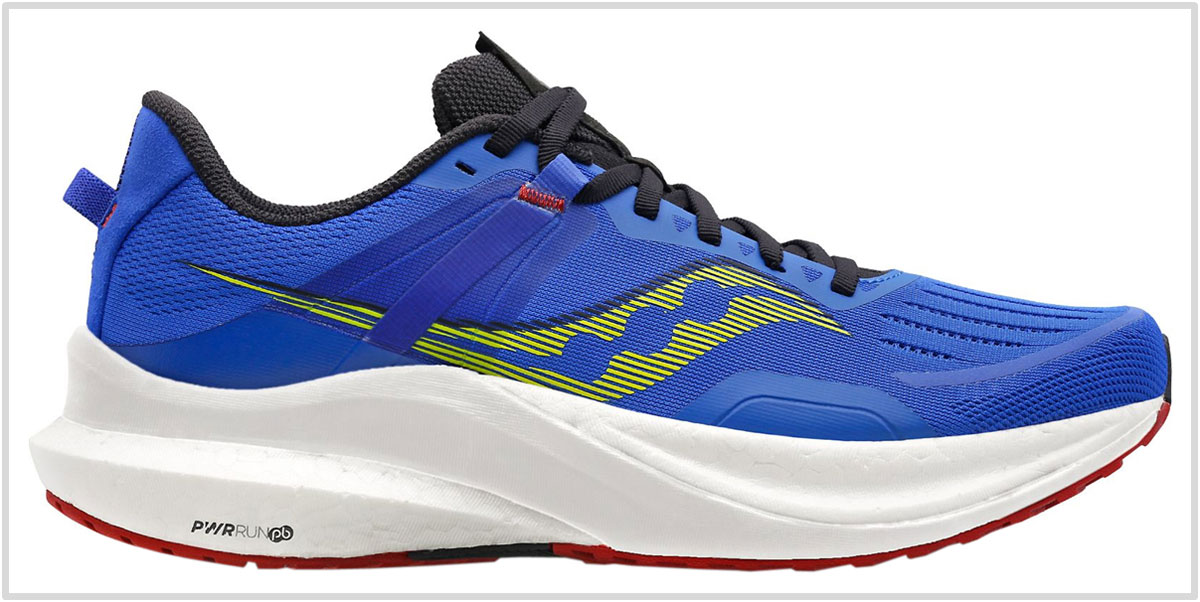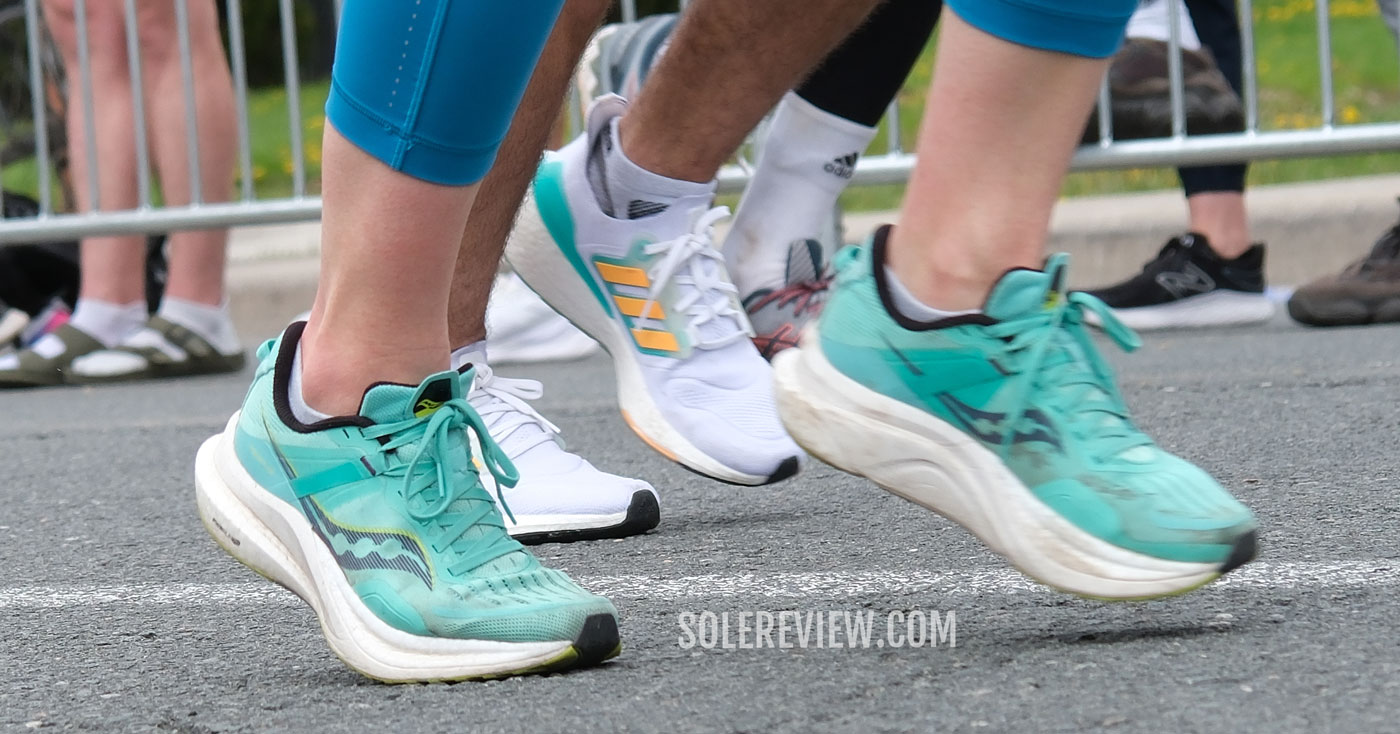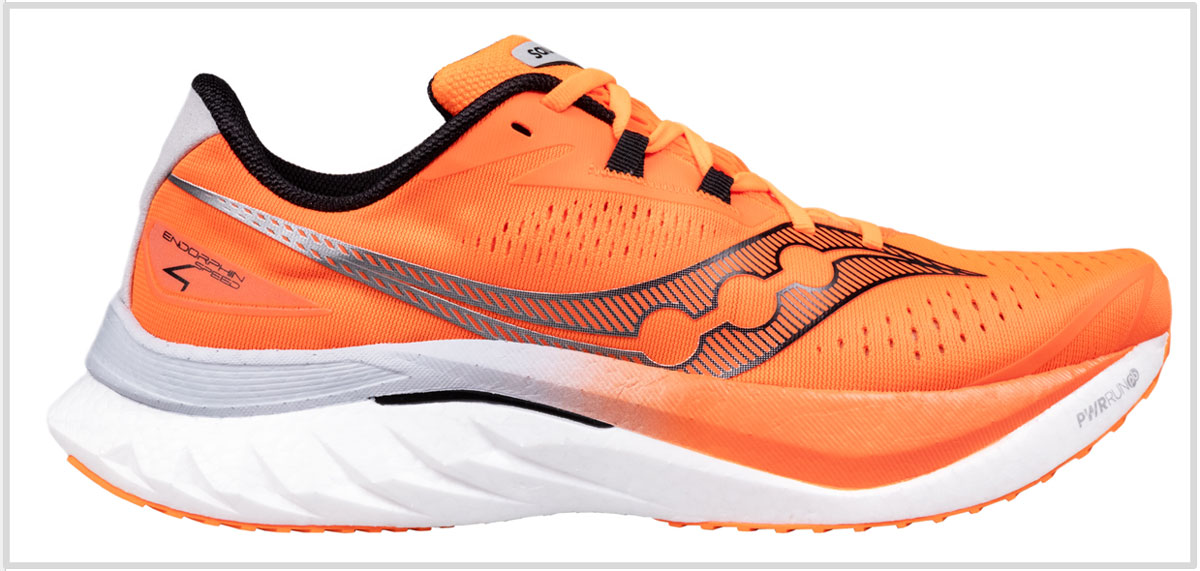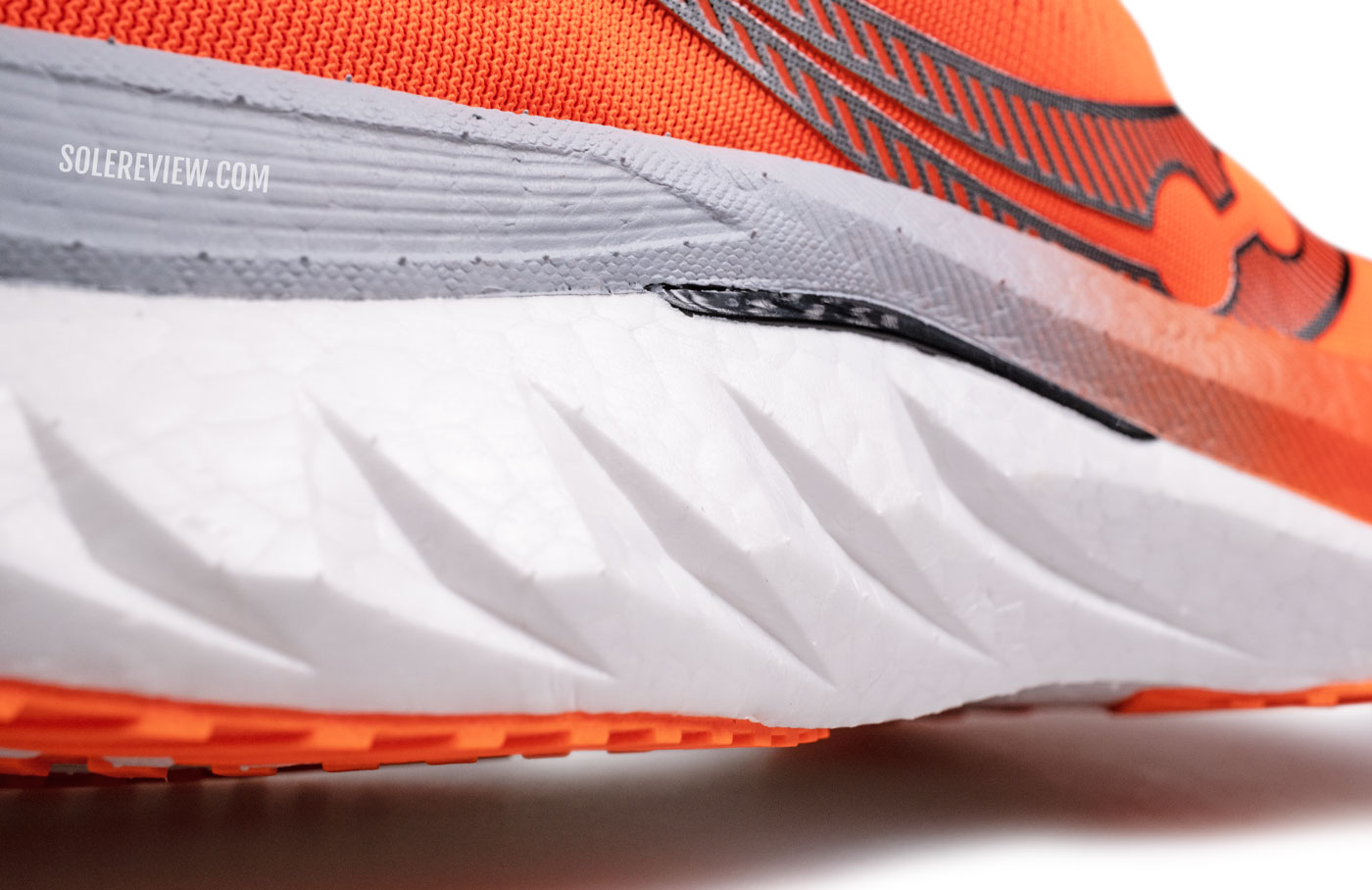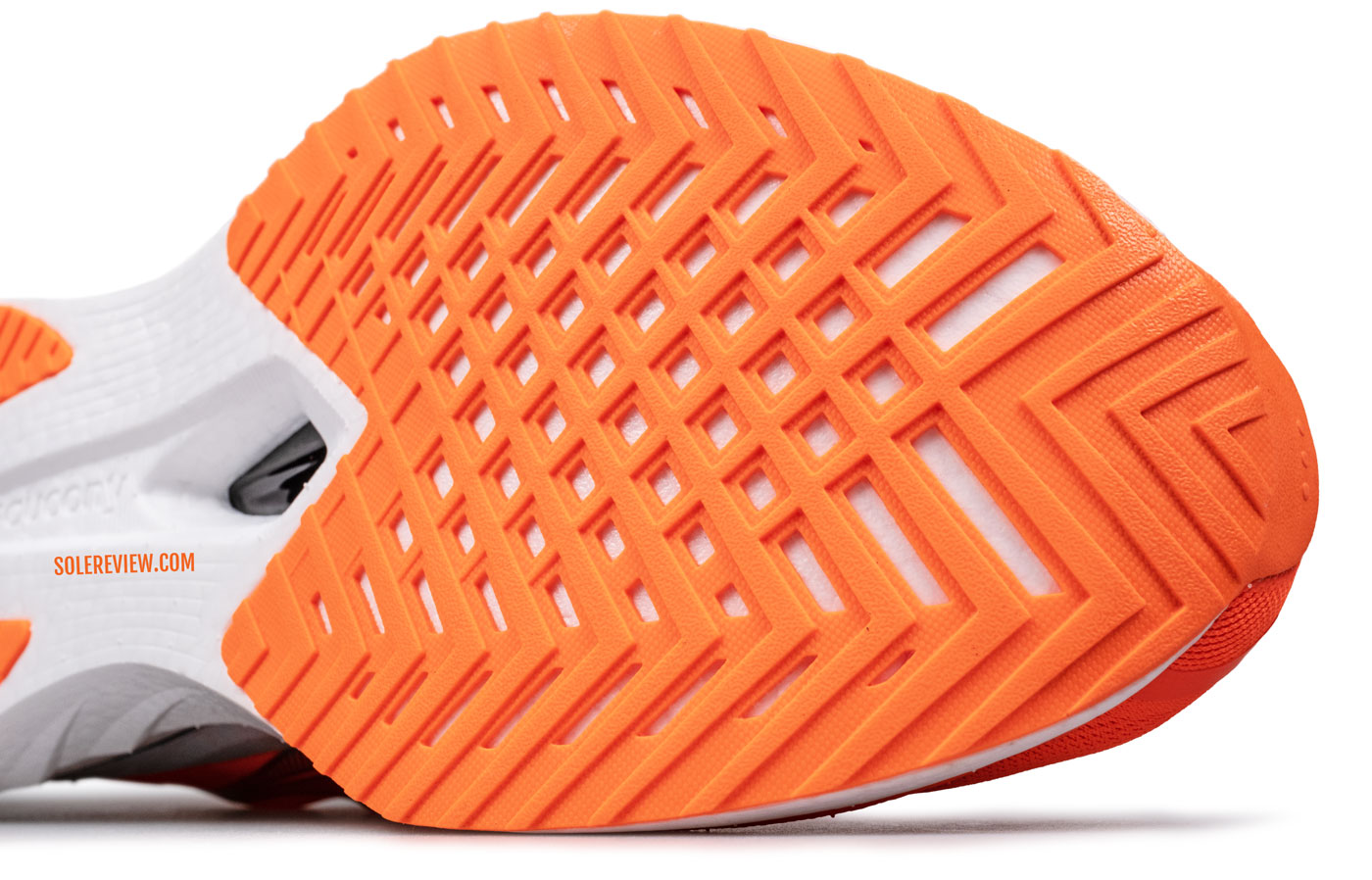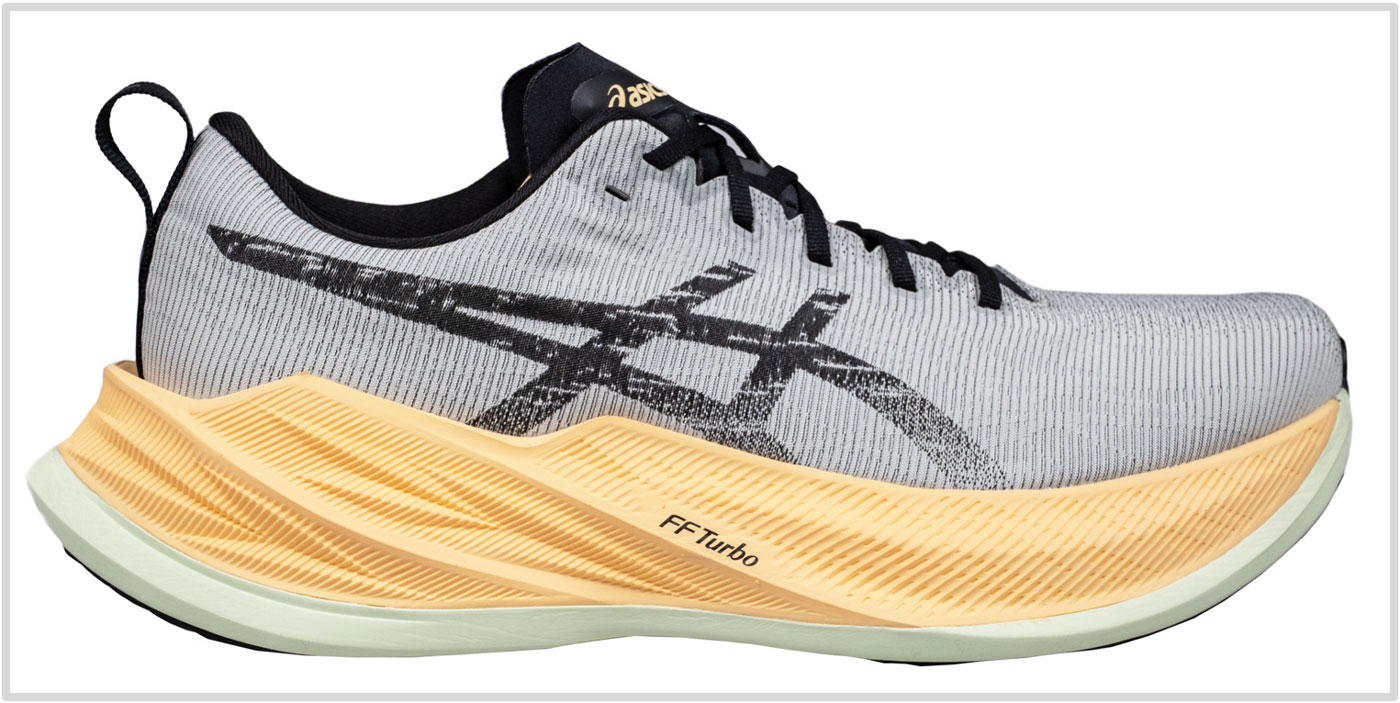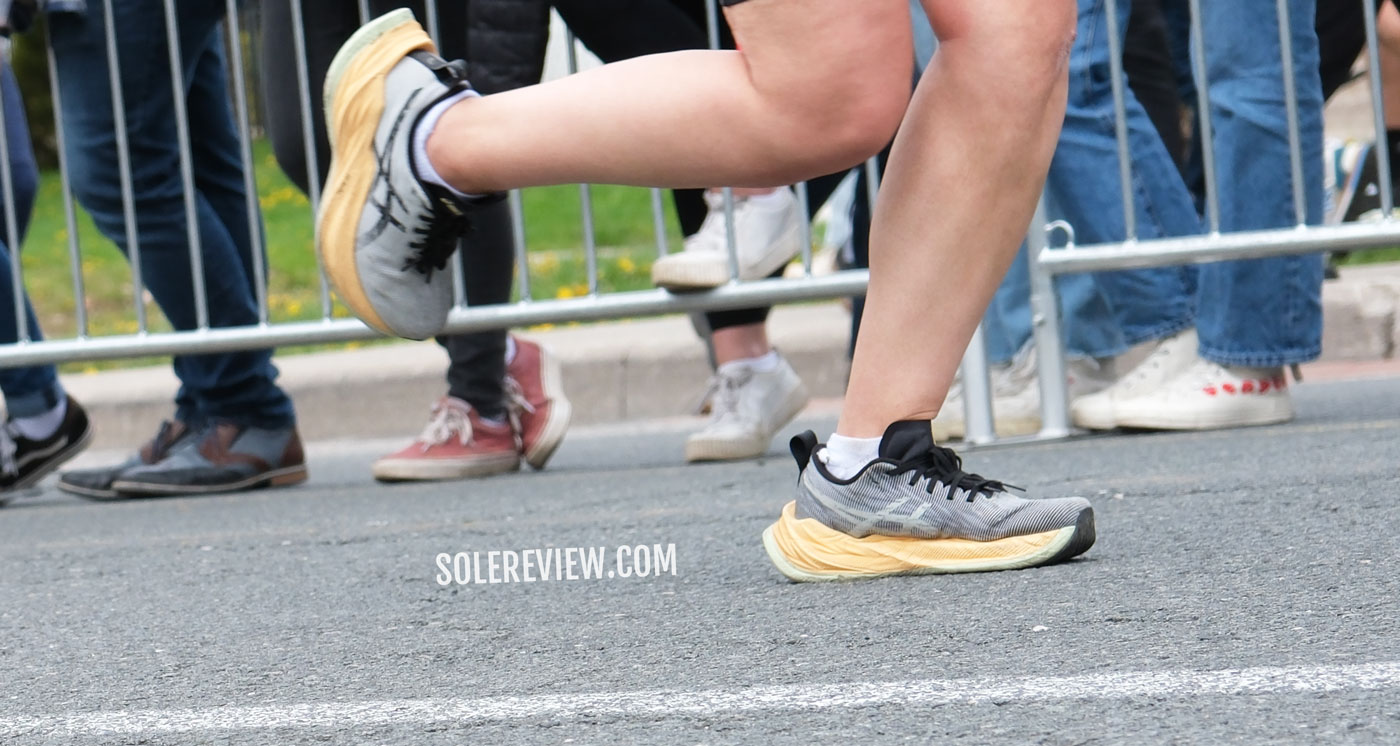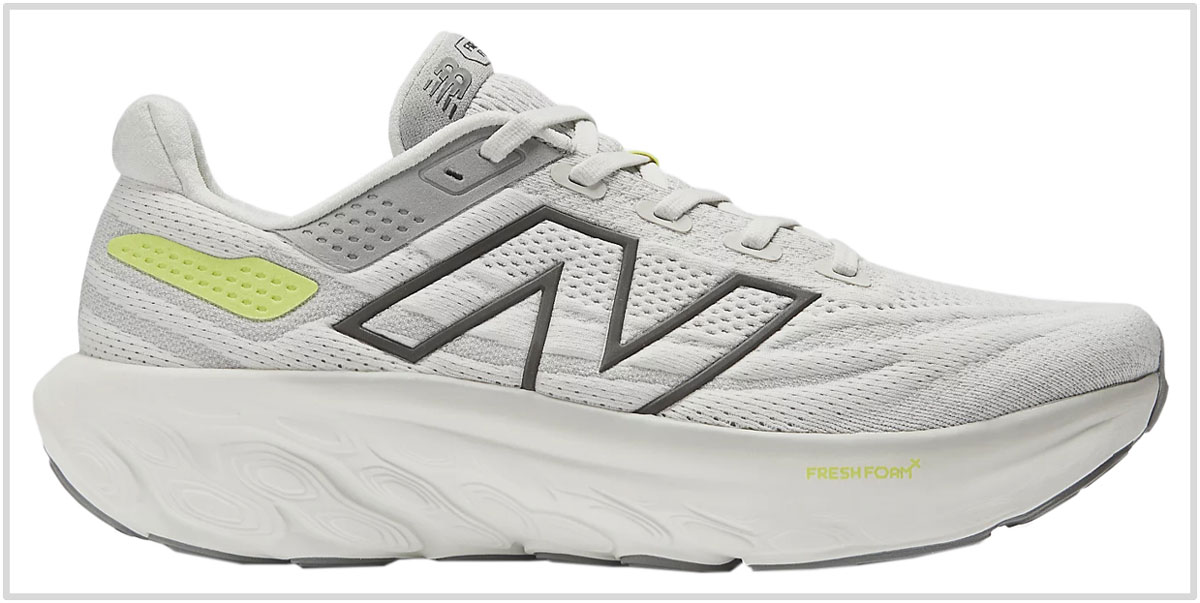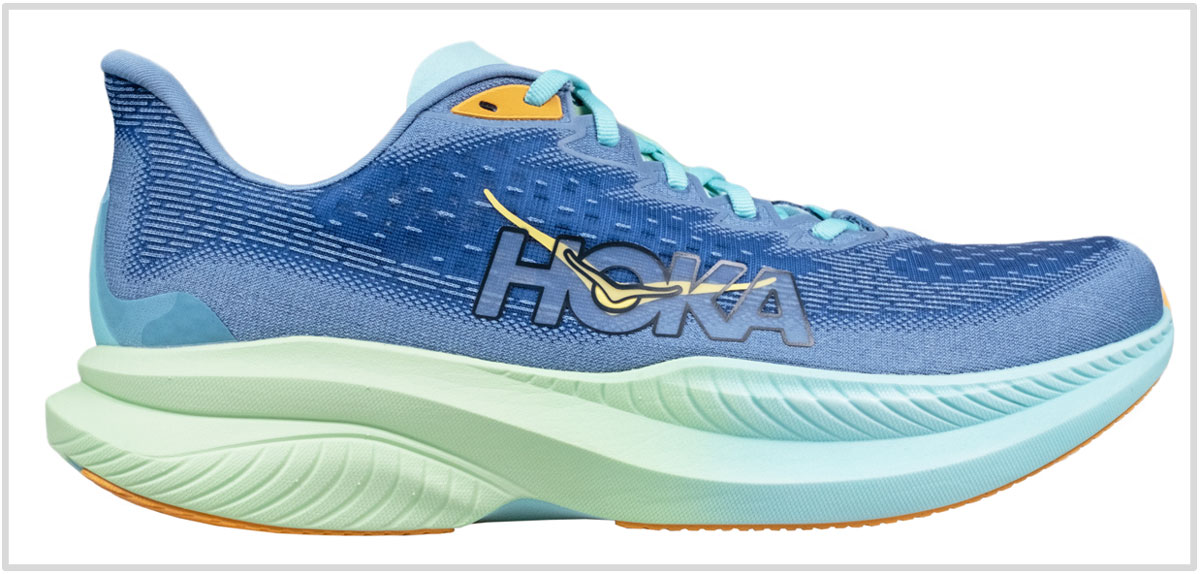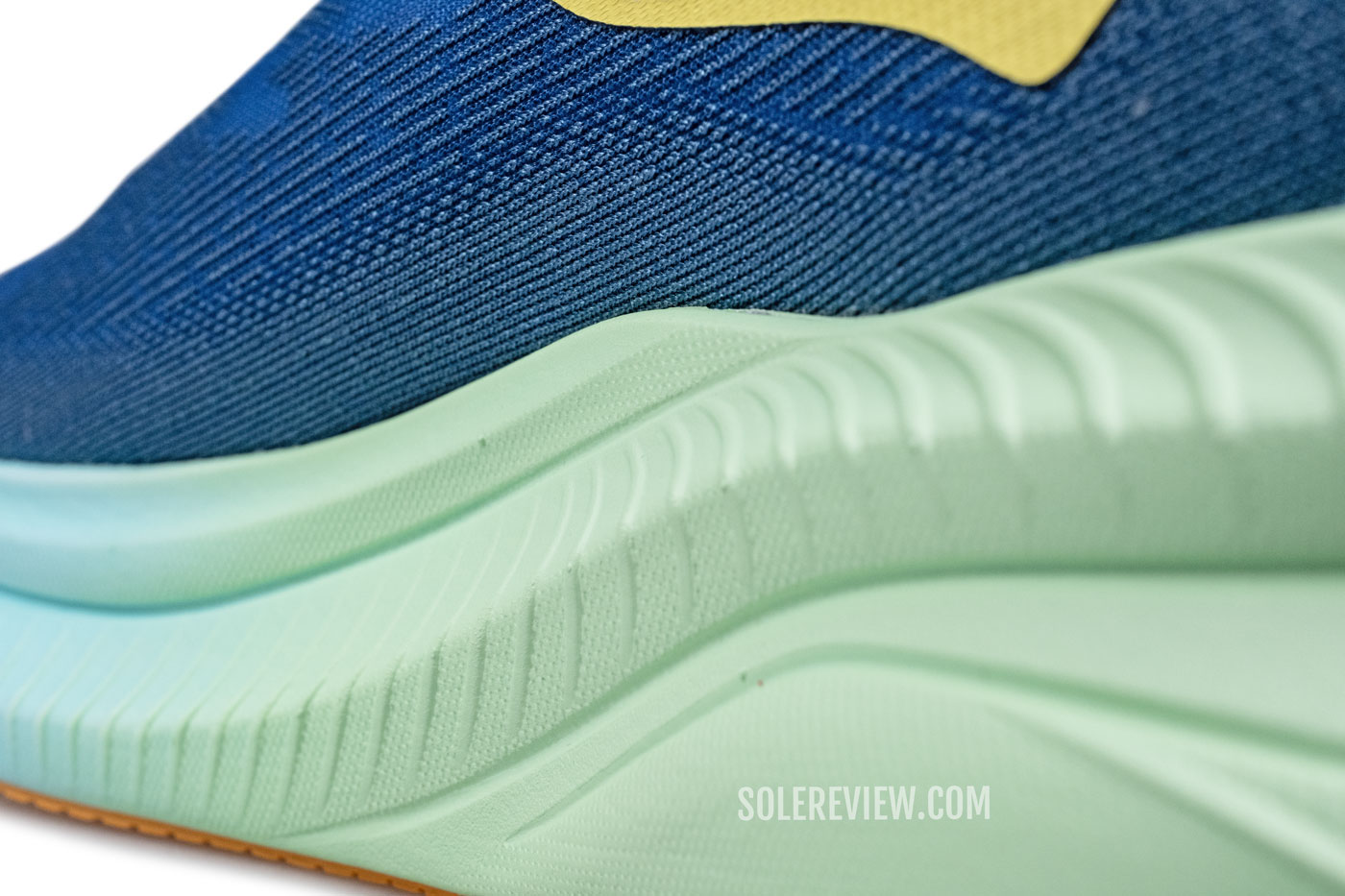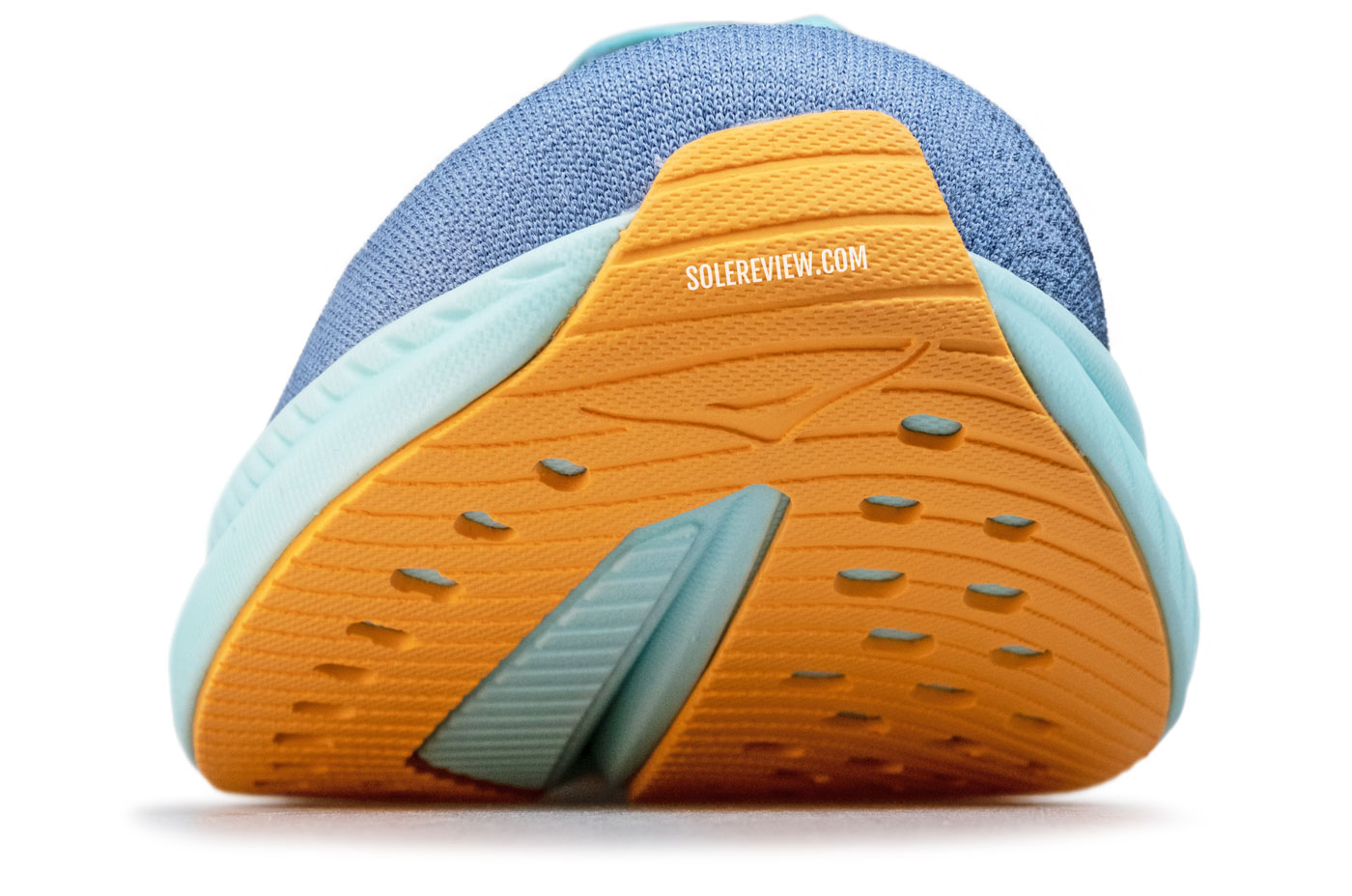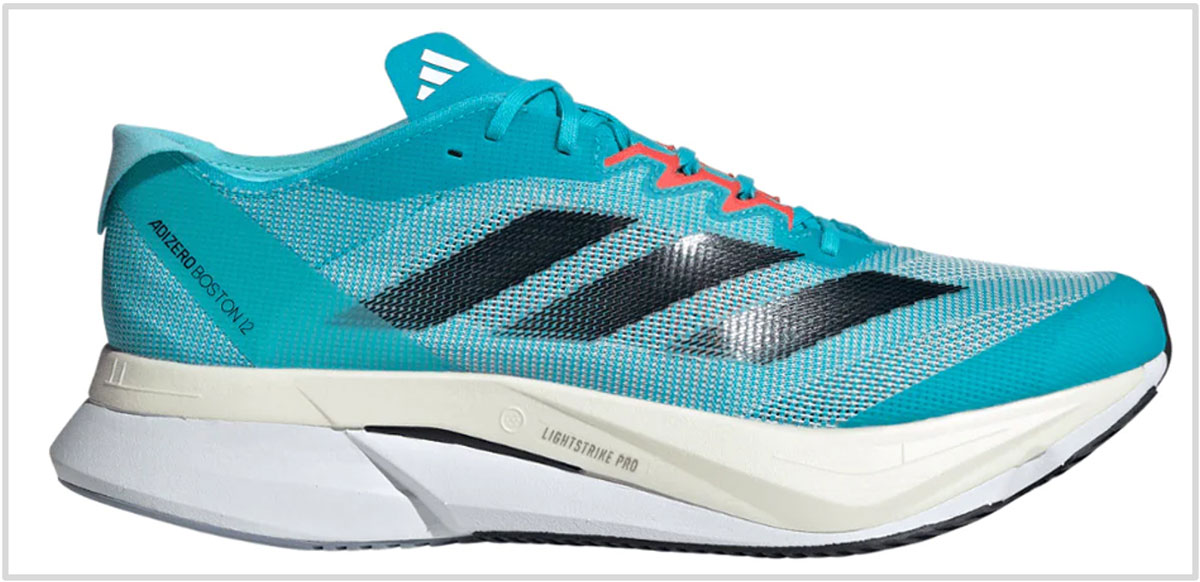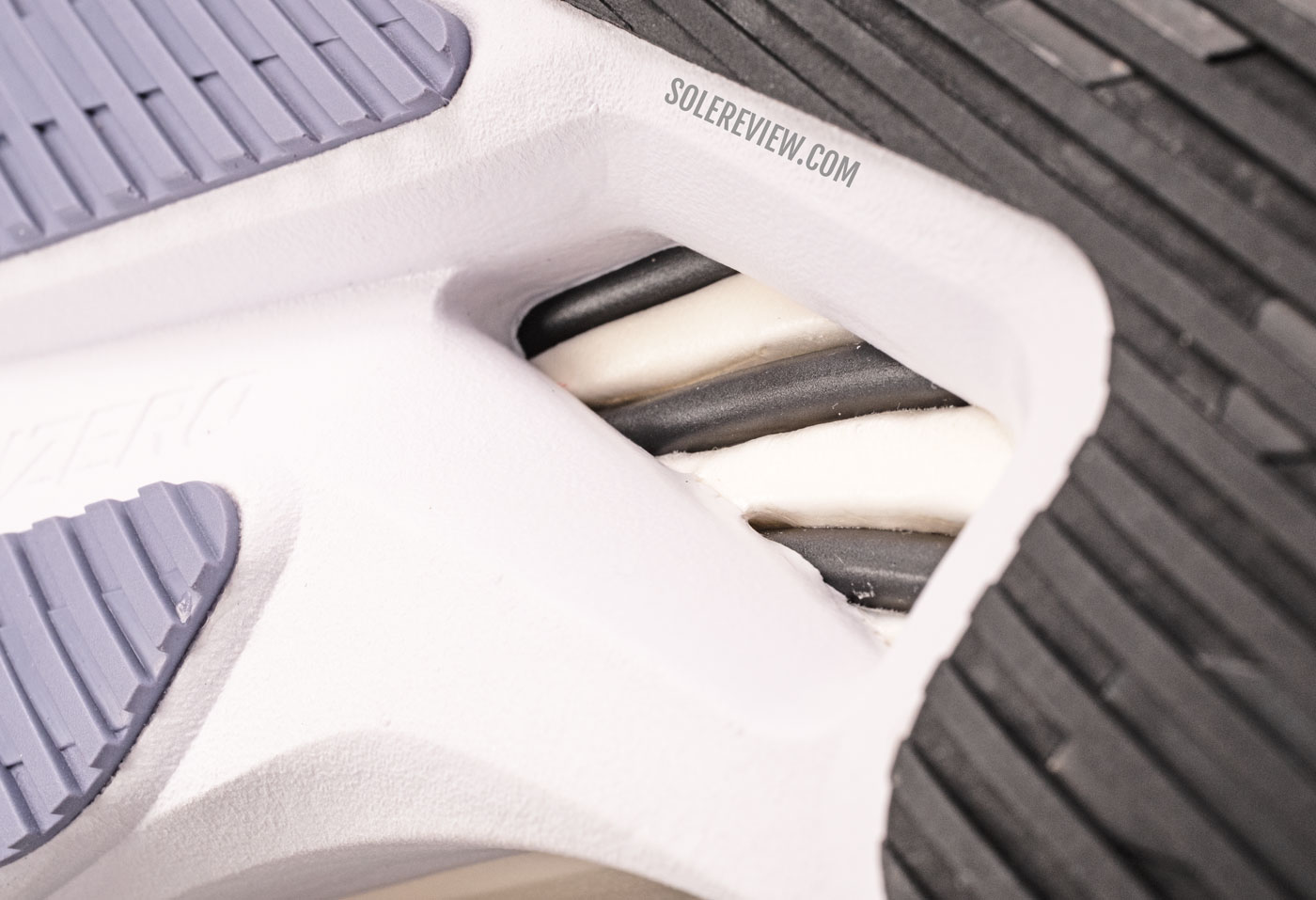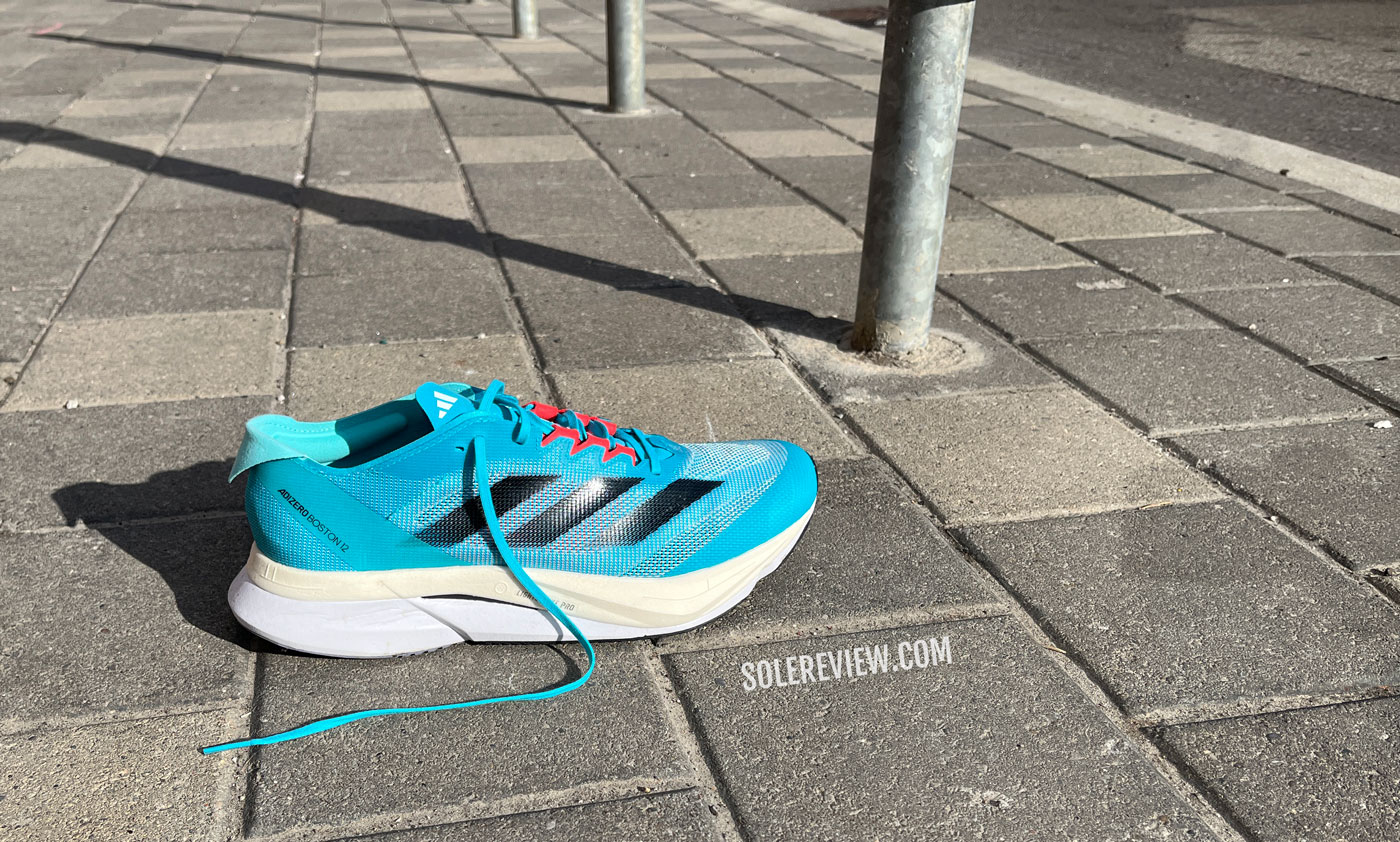This article has been updated with current models for April 2024. The Saucony Ride 16 has been replaced with its current addition. The Asics Novablast 4 is a new addition. The Nike Pegasus 40 has been removed. The Saucony Endorphin Speed 3 has been replaced with its updated version.
In this product guide:
- 1. Factors to consider
- 2. Versatile trainer for forefoot strikers: Asics Novablast 4
- 3. Daily trainer for forefoot strikers: Saucony Ride 17
- 4. Versatile stability trainer for forefoot strikers: Saucony Tempus
- 5. Marathon racer for forefoot strikers: Saucony Endorphin Speed 4
- 6. Long-distance trainer for forefoot strikers: Asics Superblast
- 7. Long-distance trainer for forefoot strikers: New Balance 1080 V13
- 8. Tempo trainer for forefoot strikers: Hoka Mach 6
- 9. Speed trainer/racer for forefoot strikers: adidas Boston 12
If you’ve been around for a while and have tracked the evolution of running footwear, you’d agree that as recently as the mid-2000s, shoes were purposely designed for rearfoot striking.
For example, most of the cushioning tech was crammed under the heel. Moreover, running shoes with a low heel-to-toe offset did not become popular until the barefoot running boom of the late 2000s.
The thought of altering the footstrike also didn’t occur to most runners, so the market didn’t exist.
Today, we have a slew of balanced choices. There’s something for everyone, no matter what your preferences or running mechanics are.
Do you want maximal cushioning, or for that matter, a shoe with a low heel-to-toe offset? Or do you want both in one shoe? Many products meet these criteria.
Runners who prefer to make full-contact landings are called midfoot/forefoot strikers. Having said that, if you currently land rearfoot and are injury-free, there’s no reason to alter the technique just because the internet tells you to.
While there is plenty of anecdotal support for forefoot striking – we also feel that full-contact landings are more efficient – there’s scant scientific evidence proving that forefoot striking is biomechanically more efficient or leads to fewer injuries.
There are so many components of a good running form, and the foot-strike pattern is just one part of it. However, it makes sense to avoid over-striding and exaggerated dorsiflexion, a state where the toes point skywards when landing heel-first.
Running shoes that are suitable for forefoot and midfoot striking need to fulfill certain qualifying factors.
Ride stability is extremely important. This criterion could be met by either a firm midsole, a wide flare or surface area, or a combination of both – along with a secure upper fit. A high midsole stack isn’t a concern as long as the other two factors add up.
The quality of transition also determines whether a shoe is compatible with full-contact landings – or not. The transition quality is the product of design choices like the foam density and formulation, the outsole geometry and grip, or the midsole shape.
Though some runners prefer a cushioned forefoot, that depends on what the shoe is being used for. Is it just a 5K run or intense interval training? Here, excessive midsole softness will impede your workout.
On the other hand, if one intends to run a marathon, then a cushioned and fast ride is desirable.
A high heel-to-toe drop is not a deal-breaker. We’re not talking about a 12 mm offset shoe here, but even 8-10 mm works as long as the heel midsole doesn’t have a long overhang. That’s the reason why the New Balance 1080 V13 and Asics Superblast feature in this guide.
Also, look for running shoes where the rear midsole edge is flush with the upper heel. A generous bevel is preferable. Here’s an example; this is what the Saucony Endorphin Speed 4’s heel looks like:
Most beveled heel designs work well for ground-contact landings. The New Balance 1080V13 isn’t exactly ‘low drop’, but it works perfectly for forefoot and midfoot strikers. So does the Novablast 4.
The bottomline is, if you get a low-drop shoe, that’s a bonus. Else, it’s a non-issue for most brands.
We cover a lot of categories here across half a dozen brands, ranging from supportive shoes like the Saucony Tempus to lightweight trainers such as the Hoka Mach 6.
1) Versatile trainer for forefoot strikers: Asics Novablast 4
Don’t let the 8 mm heel drop put you off; the Novablast 4 is as much a midfoot striker’s shoe as it is heel striking-friendly. A beveled heel and deep transition channel prevent the heel from catching the ground.
The Novablast 4 is a tall shoe with a generous amount of ride comfort. At 33.5 mm, not only is the forefoot tall, but it is also wide enough for planted midfoot landings. The Flytefoam Blast midsole has a rocker shape that ‘tips’ the foot forward for quicker transitions.
The tight upper fit locks the forefoot over the midsole for efficient power transfers. Read more about the Novablast 4 in our review, here.
The cushioned midsole makes the Novablast excellent for everyday runs and pre-marathon training. The cushioning works equally well at an easy 6:00 min/km (9:40 mile/min) pace as it does during a 4:30 min/km (7:00 min/mile) tempo run.
2) Daily trainer for forefoot strikers: Saucony Ride 17
The neutral trainer category is very competitive, but the Saucony Ride has held up over the years. Now in its 17th year, the brand-new midsole swaps the EVA foam of the Ride 16 for a full-length Pwrrun+ foam midsole – the same material that’s on the Triumph 21, but in a firmer density.
This gives the Ride 17 several benefits over the Ride 16, notable of which are higher durability, better rebound, and resistance to freezing temperatures – which would otherwise cause EVA foam midsoles to stiffen.
At the core of the Ride 17 is a character that appeals to runners of all experience classes and footstrike patterns. The 8 mm heel drop midsole has plenty of cushioning, no matter where you land. Half-marathons are easily doable, and the midsole is durable enough for everyday mileage.
The wide forefoot is 27 mm tall and has most of the outsole rubber coverage. The heel midsole doesn’t stick out too far, and is beveled for gradual landings.
Despite the 100% Pwrrun+ midsole, the Ride 17 isn’t a very soft shoe. It’s relatively firm over the Triumph 21, and that’s a nice trait to have when building up speed.
The comfortable upper is true-to-size with smooth interiors. The upper has a snug fit, so Saucony offers the Ride 17 in an optional 2E (wide) sizing as well.
3) Stability trainer for forefoot strikers: Saucony Tempus
The Saucony Tempus 8 mm heel offset is the result of a 28.5 mm forefoot and 36.5 mm heel. So regardless of which part of the shoe you land on, there’s plenty of cushioning to manage the footstrike.
The forefoot gets a cushy PEBA foam stack and most of the outsole rubber, so full-contact landings are supported with a transition-friendly design. The wide midsole base translates into a high level of stability. For everything on the Saucony Tempus, our in-depth review is here.
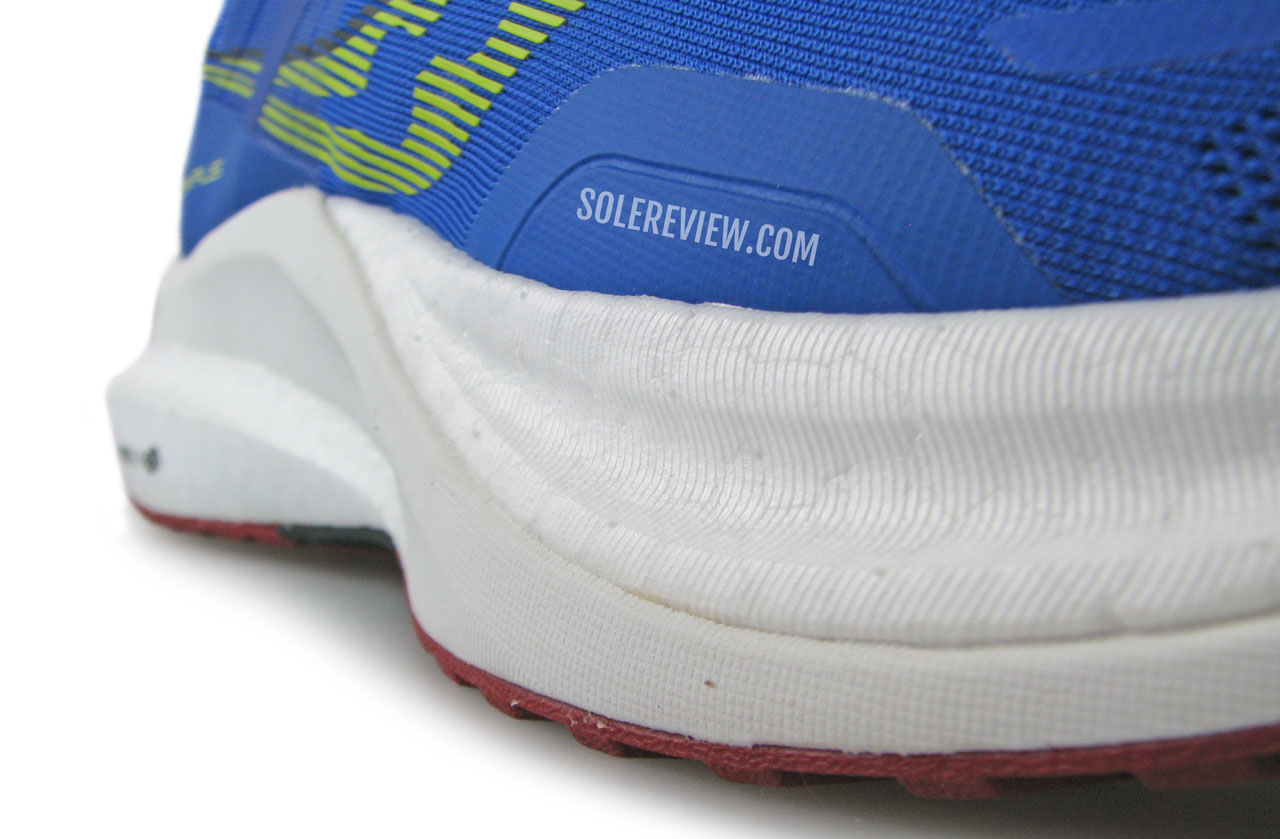
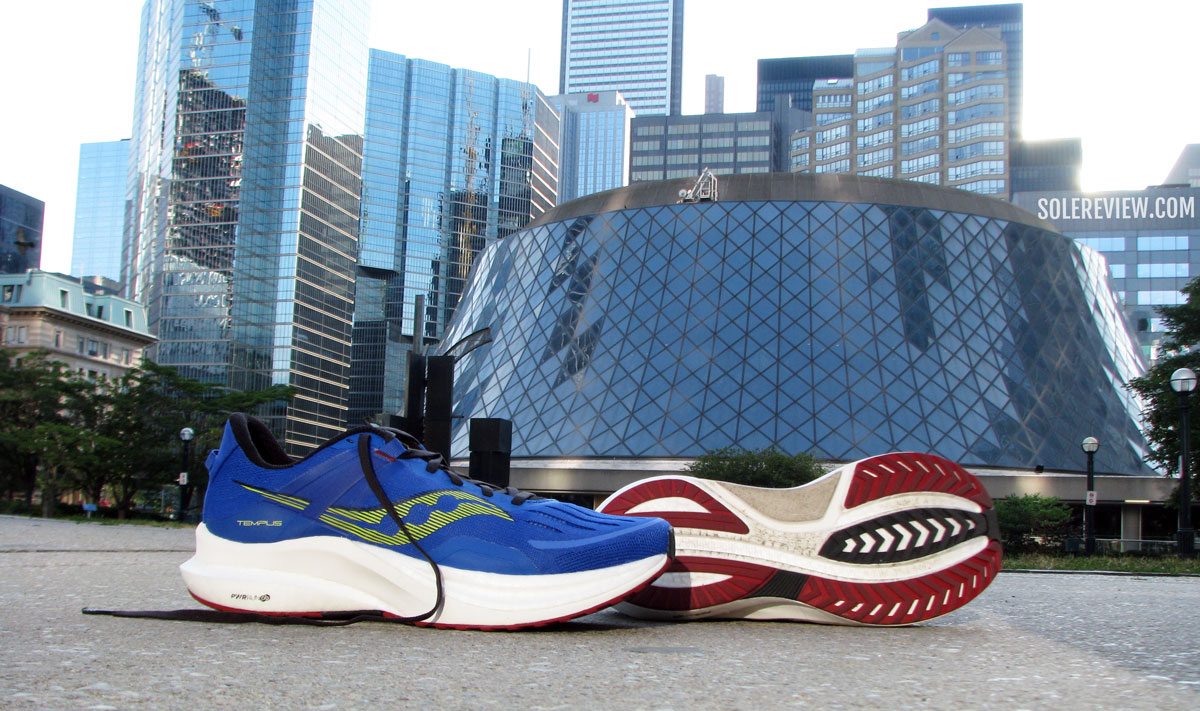
Speaking of stability, the Tempus is a unique running shoe that blends a firmer EVA frame with a softer Pwrrun PB (PEBA foam) core.
So this lightweight (8.9-ounce) stability trainer is cushioned, supportive, and extremely versatile – whether you’re using it as an everyday trainer, long-distance cruiser, or tempo trainer at 4:30 min/km speeds.
And like most contemporary Saucony shoes, the true-to-size upper is breathable, secure, and comfortable on the inside.
4) Marathon racer for forefoot strikers: Saucony Endorphin Speed 4
At an MSRP of $170, the Saucony Endorphin Speed 4 offers the best value within the foam + plate racing shoe category.
A full-length Nylon plate is encased inside a PEBAX foam (Pwrrun PB) core, and its base is anchored under the forefoot.
The Endorphin Speed 4, along with the adidas adios 3, is one of the more supportive plated racers. The stability benefits from the firmer ride, flared from the deep transition groove under the heel, and the ‘wing’ design of the Nylon plate.
The firm base of the plate dials in a high level of stiffness to the cushioned forefoot, thus making the push-off phase efficient. There’s a reason why Saucony calls this design ‘Speedroll’, after all.
The 8 mm heel drop is derived from the stack heights of 28 mm (forefoot) and 36 mm (heel), so there’s abundant cushioning under the forefoot.
The lightweight upper fits true to size and is narrow through the forefoot for better power transfer to the midsole.
5) High-mileage trainer for forefoot strikers: Asics Superblast
The Asics Superblast is proof that a higher heel drop – in this case, 8 mm – doesn’t decide whether a shoe is forefoot-striking friendly or not.
The Superblast is a premium, softer, and more responsive version of the Novablast – a versatile trainer with a cushioned ride and rocker midsole. Our detailed review explains what sets the Asics Superblast apart.
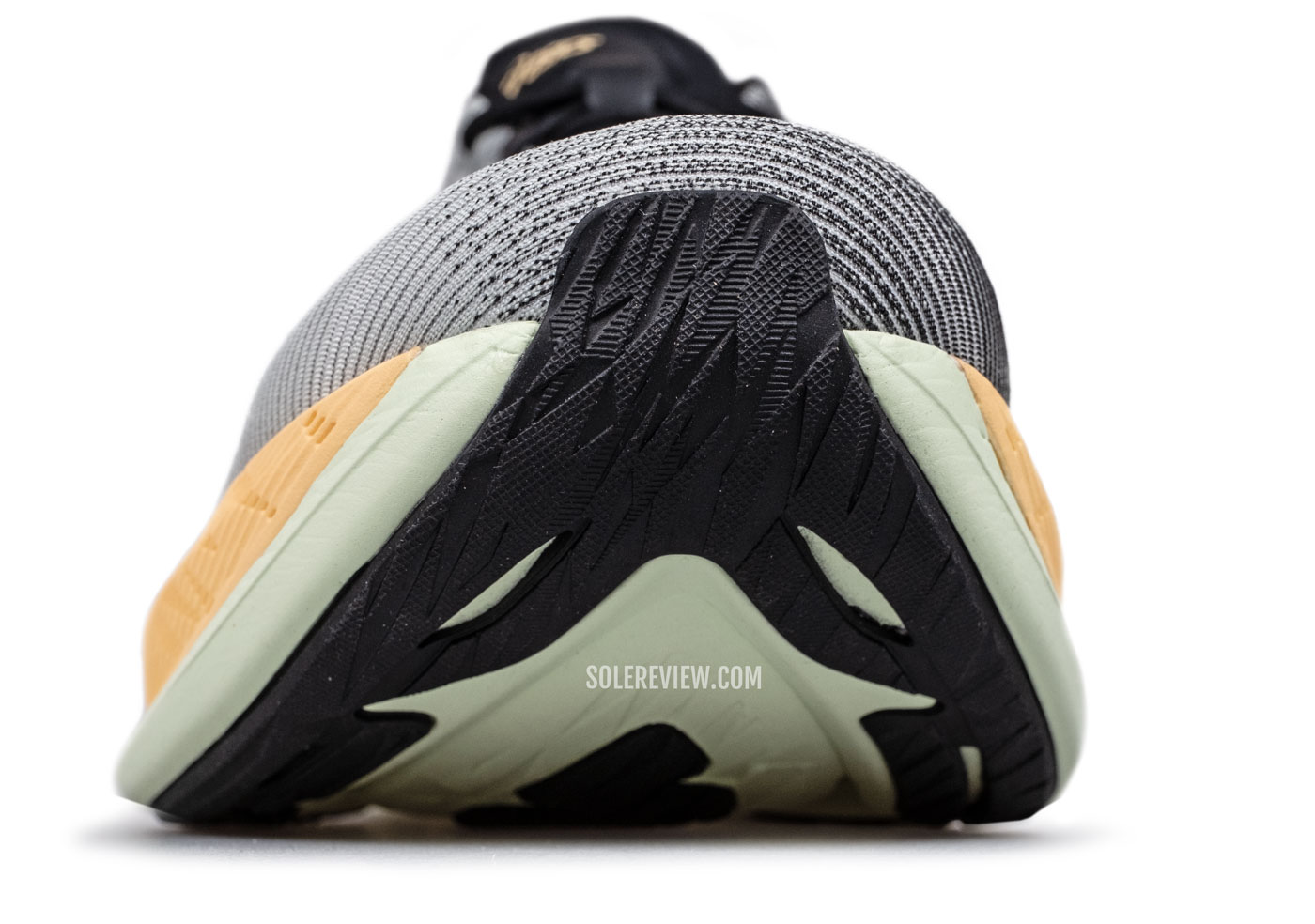
The rocker midsole helps the foot during the transition process. In short, this is a cushioned trainer that’s also capable of tempo runs.
The Superblast has a rocker forefoot for quicker transitions during toe-offs, and the 37 mm thick forefoot provides a lot of padding during full-contact landings. The midsole blends the Flytefoam Turbo foam over a firmer base, thus balancing long-distance comfort with decent levels of stability.
The upper is similar to the Novablast 3 in how it fits. It’s snug in the forefoot, and plushly padded in the heel.
6) High-mileage trainer for forefoot strikers: New Balance Fresh Foam 1080V13
One of the great things about a thickly-stacked shoe like the 1080V13 is that mileage-friendly cushioning is available no matter how or where you land. The 6 – 8 mm heel offset is the perfect middle ground too.
The outsole is segmented into multiple pieces, a layout that allows it to flex together with the soft midsole. The soft-blown rubber on the forefoot muffles the landings and delivers dependable traction.
The Fresh Foam 1080V13 is every bit as enjoyable as last year’s V12, but with one difference – the cushioning is much softer than before. That makes the 1080V13 a better choice for long-distance cruising, but slightly less versatile than the 1080V12.
Also, the 1080 V13 is the ideal long-distance cruiser for forefoot and midfoot strikers who also like their uppers to be comfortable.
The soft upper loses the stretchy mesh from the 1080V12, but it’s still very comfortable. Due to the updated mesh, the toe-box isn’t as accommodating as the previous model. Wide and extra-wide widths are optional if you need them.
7) Tempo trainer for forefoot strikers: Hoka Mach 6
Hoka positions the Mach 6 as a speed shoe, but it’s a lot more than that. It’s very different from the Mach 5; the new midsole is more resilient, responsive, and has a rocker that was missing on the previous model.
This 5 mm heel drop trainer has stack heights of 35 mm (heel) and 30 mm (forefoot). That’s enough cushioning for everyday runs and half-marathons, yet doesn’t get in the way of tempo efforts. The new foam has a smooth, bouncier ride than before, and the rocker promotes a roll-forward effect.
The low heel-to-toe offset (5 mm) and support midsole make the Mach 6 ideal for forefoot and midfoot striking.
The racer-like upper complements the lightweight midsole. The true-to-size interior combines comfort-oriented features like a padded heel with the minimalist design of a road racer. Though the Mach 6 has a narrow forefoot fit, there’s an optional wide sizing for sale.
8) Adidas Boston 12
Like the last couple of Boston models, most of the soft and responsive Lightstrike Pro foam is loaded under the forefoot. The forefoot is also where outsole coverage is maximum, and the Energy rods have maximum articulation. The forefoot is also generously flared for maximum contact. Half marathons are perfectly within the Boston 12’s performance boundaries.
The Energy rods are a glass fiber-infused structure that splits into five separate tubes under the forefoot. These tubes add transition-friendly stiffness during the gait cycle, and one of the reasons why the Boston 12 is excellent for speed training. Read our detailed review to know more about the Boston 12.
The Boston 12 derives its 6.5 mm heel drop from stack heights of 37 mm and 30.5 mm, so the midsole absorbs impact throughout its length. Forefoot and midfoot strikers will benefit from the thicker Lightstrike Pro foam, articulated Energy rods, and Continental rubber outsole coverage.
The Boston 12 ditches the retro upper of the Boston 10 and 11. In its place is a modern upper with a breathable mesh and midfoot clasping system. That’s not all; the Boston 12 is the roomiest version to date. The toe-box is spacious, and the forefoot no longer squeezes the foot in a vice-like grip. The upper runs true to size.
Do you own any of these shoes? Improve this review by sharing your insights – submit a review here.

